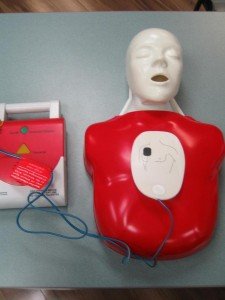An AED or automated external defibrillator is used on an individual who is experiencing a sudden cardiac arrest as a way to save his/her life. The most common cause of sudden cardiac arrest is an arrhythmia, specifically ventricular fibrillation in which the heart no longer beats normally. Instead, the heart quivers at a rapid pace and irregularly. Ventricular tachycardia is another arrhythmia that can lead to sudden cardiac arrest. This is the quick and regular beating of the ventricles lasting for a few seconds or longer.
An individual who have these arrhythmias must be given an electric shock from an AED in order to restore the normal rhythm of the heart. Just make sure that it must be performed within minutes after the onset of sudden cardiac arrest.
Signs of sudden cardiac arrest
In case an individual is suffering from sudden cardiac arrest, he/she has suddenly passed out or collapsed. You might even find the individual unconscious and could not respond when you call him/her or when shaking.
The individual might not breathe anymore or have an irregular breathing pattern. Once you will check, you will discover that the individual has no pulse. The skin can become dark or bluish in color due to the lack of oxygen. Additionally, the individual could not move or the movements are strikingly similar to a seizure.
By using an AED, you can check the heart rhythm of the individual and determine if an electric shock must be delivered in order to restore the normal rhythm.
How does an AED work?

AEDs are portable, light in weight and battery-operated devices that are simple to use. It includes adhesive pads with sensors that are called as electrodes which are affixed on the chest area of the individual who is experiencing sudden cardiac arrest.
These electrodes transmit information regarding the heart rhythm of the individual to a computer in the AED. The computer analyzes the heart rhythm to determine whether an electric shock is required. In case an electric shock is needed, the AED utilizes voice prompts to inform when to deliver a shock and it is delivered via the electrodes.
Utilizing an AED to provide an electric shock to the heart within minutes when the sudden cardiac arrest started can restore the normal heart rhythm. Always bear in mind that every minute counts for the survival of the individual.
Undergo training on how to use an AED
Learning how to use an AED and performing CPR is very useful. Nevertheless, if a trained individual is not around, those who are untrained can use an AED to save a life.
In some cases, people are afraid to use an AED because they are worried that something will go wrong and they will end up sued. Always bear in mind that even untrained individuals can respond to emergencies.
